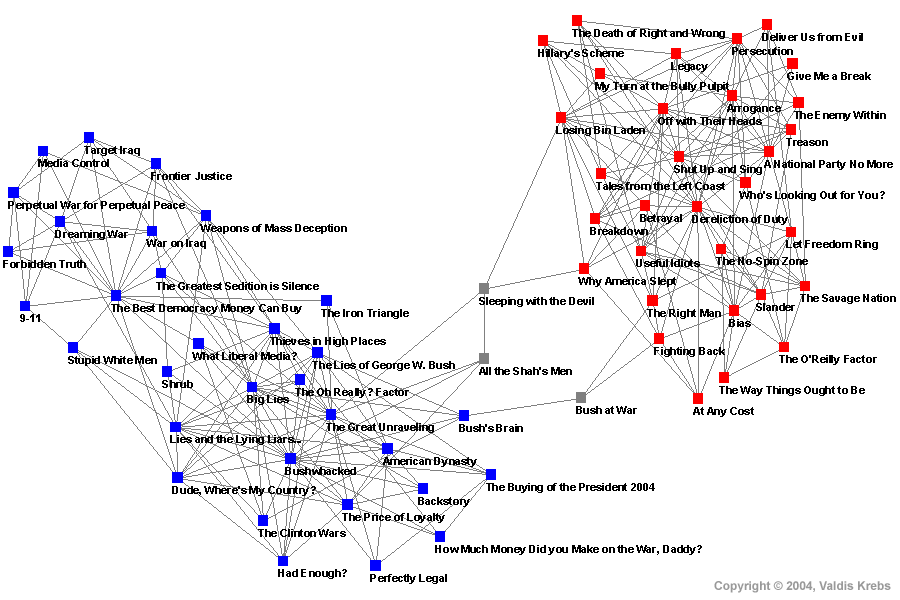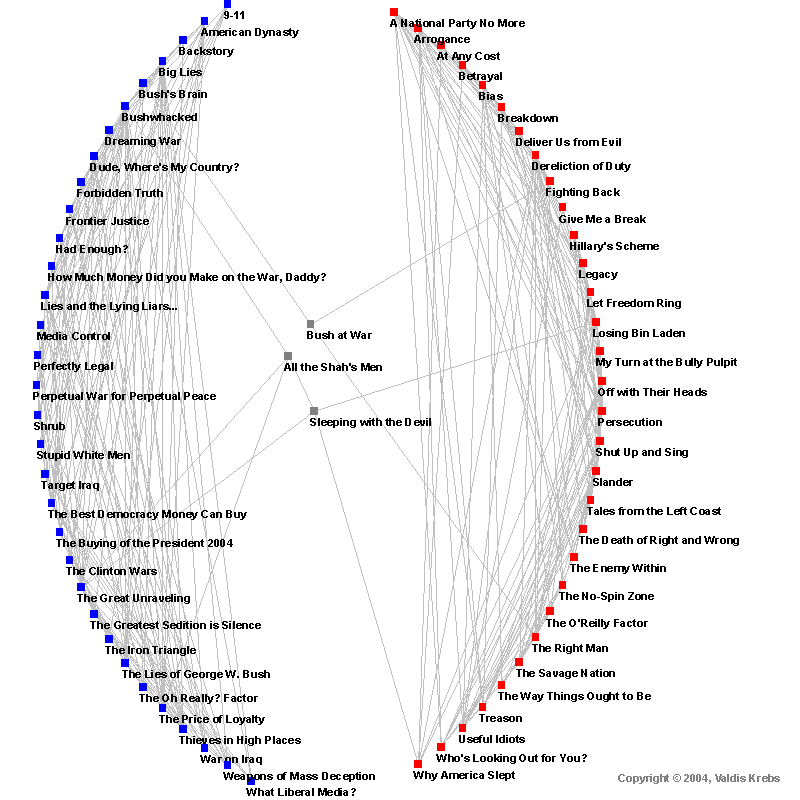Divided We Stand... Still
Last year I created a network map of political books based on purchase patterns from major web book retailers. The network revealed a divided populace... at least amongst book readers. I was curious to see what, if anything, had changed in the patterns for 2004.
From the New York Times Bestseller List, I selected political books as starting points for 'snowball sampling'. Two books are linked in the network if they were purchased by the same person -- "Customers who bought this book also bought: ". Many of the books have changed from last year but the overall pattern is the same. The pattern reveals two distinct clusters with dense internal ties. Similar patterns of extreme clustering were found by researchers looking at the links amongst web sites that cover topics with divergent views.
These political books are preaching to the converted. The extreme book titles on both sides reveal a focus on hate, instead of debate. In a year of presidential election, is this the new arms race?
What can do you do with this information during the 2004 campaigns? See someone reading Sleeping with the Devil? That is someone you can talk to about your candidate. If they are reading Bushwacked or Dereliction of Duty -- the most central books in each cluster -- then either give them a high-five or a sneer, you will not be successful in moving a reader from deep in one cluster, over to the other cluster. All you can do is focus on the edge nodes and the bridges.
Could it be that our book readers are key opinion leaders in their communities? An opinion leader is someone whose influence spreads much further than their immediate circle of friends & family. A current business book, The Influentials, by Ed Keller and Jon Berry, reports that reading "is their[influentials] leading hobby". The authors continue, "Further, Influentials are markedly more likely than the average person to say they are 'very interested' in many of these areas with particularly large differences in politics (33 points), news and current events (25 points), ... " see [page 60].
Are these two clusters connected by non-political books? In the map above we see a path of 4 steps from the most central Blue book to the most central Red book. Using current fiction titles we do not find a shorter path! Using Da Vinci Code the centers of the clusters are 7 degrees/steps apart, The Five People You Meet in Heaven and South Beach Diet result is 9 degrees apart and The Last Juror takes over 15 steps to connect the centers. Most social network theorists believe that any pair linked by a path of more than three degrees are very far apart. Maybe most readers of political polemics don't read other types of books, and vice versa? The best fiction bridge across the chasm may be a mystery novel by Bill O'Reilly -- Those Who Trespass. The O'Reilly thriller is on a 4 step path -- equal to the shortest found. The most curious link in this O'Reilly path is the one between his novel, and a parody of him called The Oh Really? Factor. Politics make strange bedfellows!
Below is the same network as above -- same nodes, same links -- but arranged in a different layout.
See newspaper articles about the book networks: New York Times,Houston Chronicle, San Diego Union Tribune.
Software and Training in social network analysis are available from the author.
Home | Software | Training | Consulting | Case Studies | Blog | Contact
Copyright © 2004, Valdis Krebs

